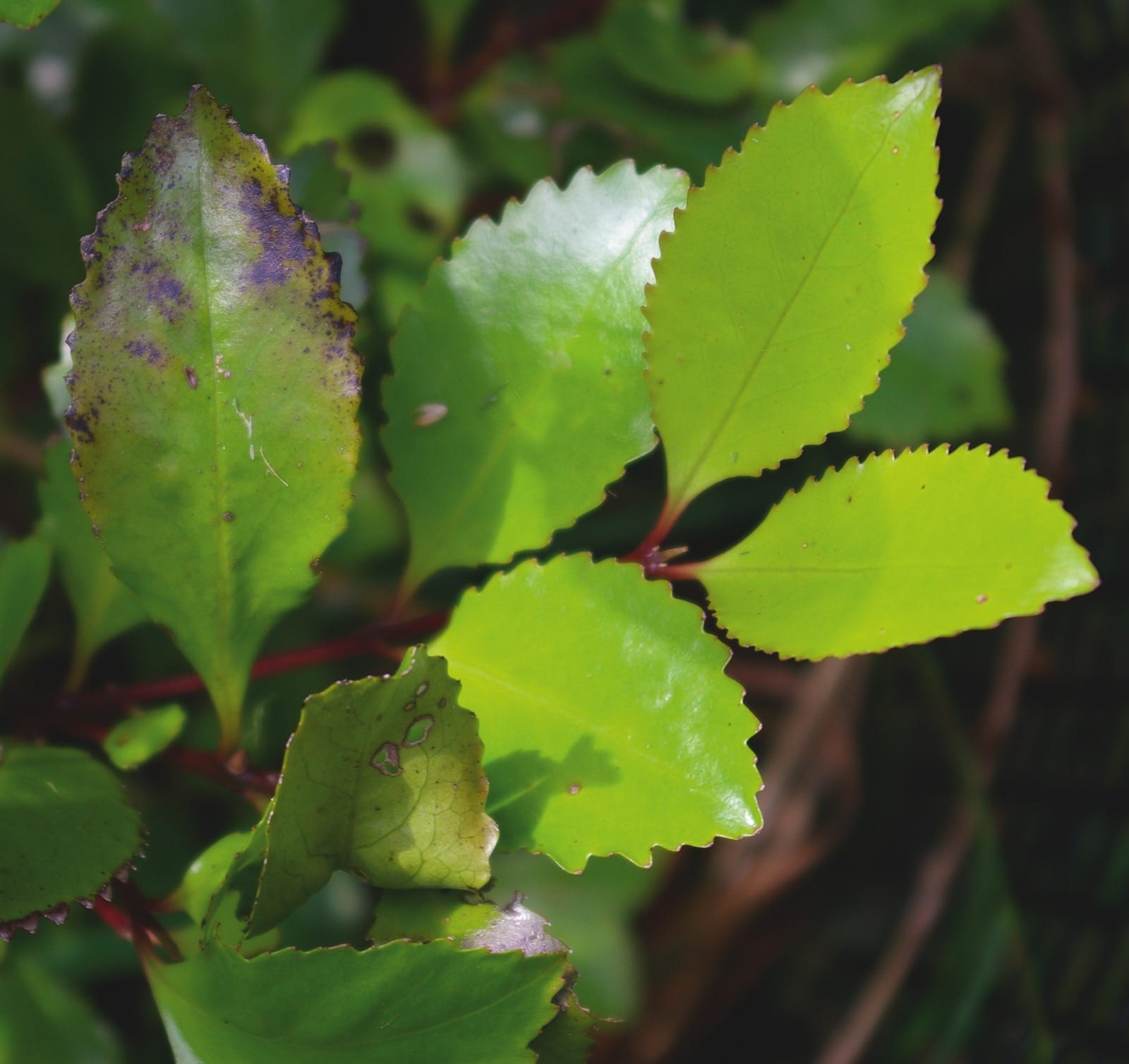Laurelia novae-zelandiae
Credits
Article from New Trees by John Grimshaw & Ross Bayton
Recommended citation
'Laurelia novae-zelandiae' from the website Trees and Shrubs Online (treesandshrubsonline.
Genus
Common Names
- Pukatea
Large tree to 30 m, 1.6 m dbh; trunk with large, radiating buttresses. Branchlets four-sided, pubescent. Leaves evergreen, opposite, leathery, aromatic, 4–7.5 × 1.5–4 cm, oblong, glossy and glabrous, six to eight secondary veins on each side of the midrib, margins with shallow, rounded serrations, apex obtuse; petiole 0.4–0.6 cm long. Inflorescences axillary, racemose, 4–8 cm long, dioecious or with some hermaphrodite flowers; flowers rather small, 0.3–0.5 cm diameter. Fruit a small achene with silky hairs to 3 cm long; 6–12 achenes are produced in a four-valved, vase-shaped hypanthium. Flowering October to November, fruiting March (New Zealand). Cockayne & Phillips Turner 1958, Poole & Adams 1963. Distribution NEW ZEALAND: North Is., South Is. (as far south as Marlborough and Nelson). Habitat Lowland swamp forest (~200 m asl) or somewhat drier areas. USDA Hardiness Zone 9–10. Conservation status Not evaluated. Illustration NT443. Cross-reference K205.
Laurelia novae-zelandiae is potentially a large canopy tree, forming buttresses at the base of the trunk, but is slow-growing and unlikely to achieve its full size in gardens, even in New Zealand. It has attractive glossy green leaves (glossier than the South American species), held in opposite pairs on the twigs and forming a dense mass of greenery that makes it a good specimen plant. The pale greenish flowers are small and insignificant (Metcalf 2000). It is being grown in Cornwall, and a young plant was flourishing at Tregrehan until it was stolen (T. Hudson, pers. comm. 2006). It will grow best in deep fertile moist soil, doing particularly well in waterside plantings. It can be grown from seed or cuttings (Metcalf 2000).

